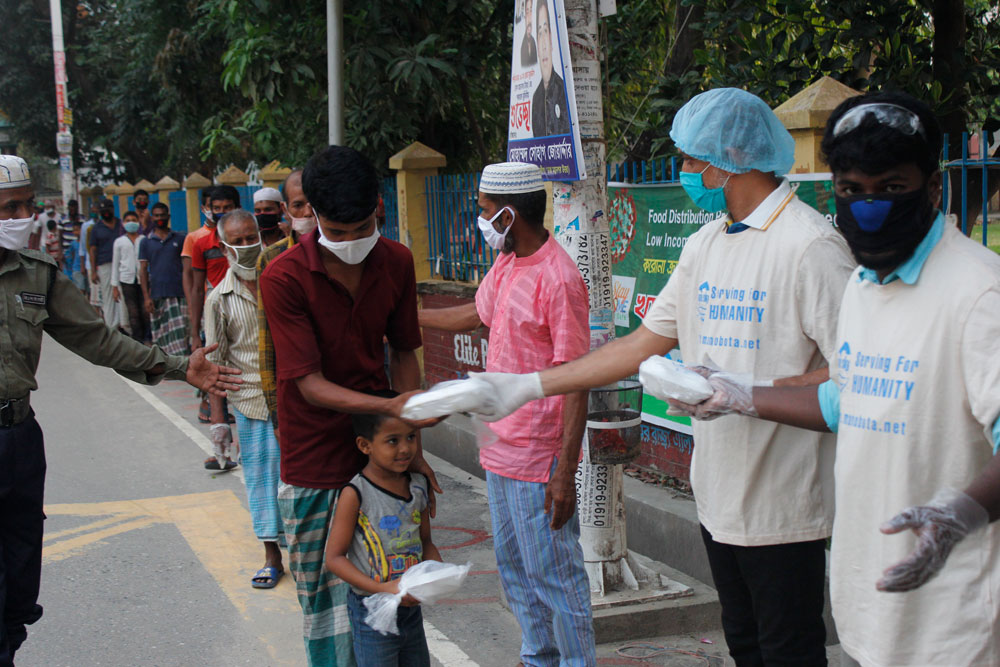
While NPQ is inherently suspicious of survey findings, especially when the questions ask what the respondents are likely to do rather than what they already did or experienced, something about the recent effort from online fundraising platform Classy made us pause and take notice. It might have been the approach, which stuck to questions that might conceivably be useful for fundraisers as we head to the year’s end.
The survey had all the usual problems, with a relatively limited number of respondents (1,000) which comprised a convenience sample of those who donated digitally through Classy. We’ll leave you to unravel the ways this affected the results, but in short, consider the source as you take in this data.
Again, what I liked most about the survey were the questions, which were very much of the moment. How did the election, the pandemic, and racial justice organizing impact the amounts people gave, and to whom? Did people replace one type of giving with another? Under economic stress, and as those closest to the problem being addressed, would people give more or less?
I’ll address the last question first, because the answer bears a highlight. This survey asked respondents to identify themselves as essential or non-essential workers and then asked both groups whether they planned to give more, the same, or less. It also asked if they were likely to be donating to social justice causes.
On the matter of level of giving:
The COVID-19 pandemic has also brought attention and gratitude to the brave employees, deemed “essential workers,” who didn’t have the luxury of sheltering in place as infection rates skyrocketed. In addition to tackling the virus on the frontlines, essential workers were more likely than nonessential workers (33 percent vs. 22 percent) to say that they plan to give more as a result of COVID-19. Only 16 percent of essential workers said they were not giving at all this year, compared to 25 percent of nonessential workers.
And on the matter of social justice giving:
COVID-19 essential workers were more likely than nonessential workers to donate to social justice causes (57 percent vs. 41 percent). It seems that in addition to their work on the frontlines of the COVID-19 pandemic, these essential workers might be sensitive to the danger of another pandemic in their communities: systemic racism.
Sign up for our free newsletters
Subscribe to NPQ's newsletters to have our top stories delivered directly to your inbox.
By signing up, you agree to our privacy policy and terms of use, and to receive messages from NPQ and our partners.
The survey questions, as I mentioned, focused on what, if anything, in the current environment was motivating gifts and from whom. Around 17 percent of respondents said recent social injustices had the biggest effect on their current giving, with the political climate a close second at 19 percent, but the pandemic was far and away the biggest motivator, at 59 percent. Still, among all the respondents, a full 42 percent of survey respondents said they had donated (or planned to donate) to social justice causes in this year. The majority of those reported it would be their first time doing so.
One of the other notable findings in this report was the degree to which younger donors were motivated to give more right now than last year, and in greater numbers than older people. From a generational standpoint, both Gen X and Gen Z were most likely to say they were making a donation to the fight against social injustice this year (57 percent and 55 percent, respectively). Among these Gen X donors, 75 percent said this was the first year they have donated to this cause. Among baby boomers and the silent generation, only 14 percent said they were likely to give more.
Respondents cited a variety of reasons for altering the levels of giving in 2020, as the list below summarizes:
Why giving plans changed (reasons offered)
- Nonprofits need more than they did before: 39%
- Income had changed: 36%
- More passionate about issues than before COVID: 33%
- Have more time to look into organizations: 29%
- Used stimulus check to donate to causes they care about: 21%
The report adds:
Furthermore, for some Americans, the pandemic has changed who they plan to support, with 31 percent giving to new organizations…. Among those who have donated to COVID-related causes, 27 percent have made these contributions in addition to their normal nonprofit support, while 24 percent say these COVID-19 donations have replaced what they would typically support.
Finally, in a well-known but oft-forgotten truism, giving during the election did not for the most part limit the same individuals’ giving to nonprofits. In fact, just the opposite was true.
Those who give to political causes are also likely to increase their giving to nonprofit organizations in 2020. In total, two-thirds (66 percent) of those who are donating to political causes plan to give more in 2020 than in the previous year. Only 7 percent will give less this year.
The report ends on a positive note, a kind of “heed not the naysayers” booster shot. This is not, as far as Classy can see, a situation in which donor fatigue or a focus on self-help alone is at work. Rather, it’s an environment in which the ideas of mutual aid and collective action are very much alive. The trick is not to fall prey to such drones and dirges yourself, and to recognize the energy that surrounds us, because that is where the cash should come from if you are looking to build community.












